|
I'm sure after reading the title some of you are already thinking, "doesn't chiropractic only help with back and neck pain?". Indeed chiropractic care helps with problems such as back pain, neck pain and headaches, but if we dig a little deeper and look at the neurological changes that occur with Chiropractic adjustments, then we can see a bigger picture of the positive effect it has on our brain and on our mental health. Before getting into how Chiropractic benefits mental health, I want to touch on the important subject of salutogenesis. Salutogenesis is an approach to health looking at factors that support well-being and health rather than focusing on factors that cause disease. It's about what we can actively do for ourselves to strengthen our health instead of hearing and discussing about things that are bad for our health without any action steps. During this time of COVID I've seen and read a lot in the news about how our mental health is detrimentally affected by the measures that we're all taking in the name of public health to protect our community. It's tough. It's really, really tough. Having to physically distance ourselves, self isolate, avoiding going outdoors unless essential; human beings are social creatures by nature so we are effectively turning our way of life upside down. And let's not forget the stress that can come with being out of work, being immunocompromised during all of this, or dealing with your friends, neighbours, family members or colleagues who may be flouting guidelines when you're being as safe as possible for the benefit of everybody. It's all so incredibly mentally taxing. Identifying these things as factors that are affecting our mental health doesn't directly help us improve our state of mind. It's a lot of observation without any action. I found myself worrying and at times complaining about how things are. I had to remind myself that I can take control of my own thinking and choices and that there are so many ways that we can improve our health in spite of this pandemic. There's no reason why we can't come out of the other side of this pandemic EVEN HEALTHIER than we were last March. I truly believe our focus should be on emphasizing things we can do to support our health and well-being. So if we view health care from a salutogenic model, that means focussing on things that we can actively do to improve our health. This shift in mindset in and of itself is great for your mental health. It makes you focus on the positives; on things you can do to improve your situation and better yourself. Focussing your energy on getting regular exercise, eating healthy, getting plenty of sleep and socializing virtually are great ways to actively improve your overall health! This poster is hung up here at Thrive Chiropractic as a simple reminder of what you can do to improve your health So how does Chiropractic help mental health? We'll get there soon, I promise! Salutogenesis aside, next it's important to understand that mental health includes our emotional, psychological and social well-being. Our mental health affects how we think, feel and act. It also helps determine how we handle stress, relate to others and our decision making. So if your mental health is suffering then subsequently your thinking, mood and behaviour may be affected too. Alright, so mental health AFFECTS our thinking, feelings and actions... but what CONTROLS our thinking, feelings and actions? The BRAIN does! Humans all have a part of the brain called the Prefrontal Cortex in our Frontal Lobe. This separates us from animals. This part of the brain is responsible for our executive functions. It orchestrates our thoughts and actions in accordance with internal goals. So your Prefrontal Cortex controls your ability to do the following:
So if your Prefrontal Cortex isn't functioning at it's best, then you may experience some mental turbulence. Research out of New Zealand shows evidence that Chiropractic adjustments stimulate the Prefrontal Cortex. This study showed that when the spine is adjusted, there is a significant increase in activity in this region of the brain by 20% on average. This increase in activity isn't just a flash in the pan either, but rather it may make lasting change. So if our Prefrontal Cortex is functioning optimally we may have greater adaptability to stress and anxiety. Chiropractic care can literally change the way you think by improving the health and function of your brain! "Your body hears everything your mind says" Never forget that you can control your thinking and choices, and that it's ultimately up to you to choose to focus your energy in a positive way and to DO things that will make you healthier and happier. If you think your Prefrontal Cortex could benefit from some additional stimulation and activity, then click HERE to make an appointment. Thrive Chiropractic
214 Wellington Street Kingston, ON K7K 2Y7 (613) 217-1560
4 Comments
Well it's been about 3 months since COVID-19 has forced us all to change our way of living and to adapt to things such as maintaining physical distance and working or studying from home. One issue that has likely remained consistent is that the majority of us are sitting wayyy too much, especially during this pandemic! I'm sure that many of those reading this blog post have heard or are aware that sitting is linked to many diseases but in case you didn't know, I'll be sure to touch on that subject a little later. For now let's pivot and take a step in a slightly different direction to discuss how too much sitting can actually affect a whole heap of things including your memory, impulse control and even coordination. Work, study, driving, relaxing... We spend far too much time sitting and being sedentary! When we are in motion, the neurological pathways especially from our legs provide the primary sensory input to two regions of our brain: the cerebellum and frontal lobe. What this means is that if you're sitting too much then you aren't stimulating or developing those areas of your brain. Why is this so important? Well that's because of the function of these two regions of your brain which we'll delve into next. Your cerebellum controls coordination of your voluntary movements. This would include your balance, judging distances while moving and knowing when to stop, and also rapid alternating movements. So for those of you who consider yourself naturally clumsy, it may actually be due to your cerebellum not functioning optimally. Your frontal lobe is incredibly important for your mental, physical and overall health! It controls cognitive skills and your ability to process thoughts. This includes emotional expression, memory, problem solving, judgment, impulse control, spontaneity and even social and sexual behaviour to name a few. A lot of "who you are" comes from how well your frontal lobe has developed and how well it functions With regards to physical effects, your frontal lobe is responsible for inhibiting the sympathetic nervous system. Your body activates the sympathetic nervous system when you're under excessive stress. This response is necessary in some situations, but if it's always switched on then it's terrible for your health. It's exhausting for your body to stay stuck in a sympathetic state for prolonged periods and it causes chronic, low-grade inflammation that affects your organs. When your spine is healthy, you're consistently active, and your nervous system is functioning optimally, then you have the best chance to have a healthy frontal lobe. So that's how being inactive and sitting too much can affect the function of your brain, but what about those diseases I mentioned before? Well sitting has been linked to increased risk of type 2 diabetes, cancers, heart disease, high blood pressure, depression and aches and pains. Even more reasons to sit less! After everything you've now read, if you're already motivated to get up and get moving more then that's fantastic! But I do want to stress that prolonged sitting only contributes partially to those diseases and conditions that I touched on just a moment ago. The biggest contributing factor is your lifestyle! Are you eating and drinking properly? Exercising regularly? Getting enough sleep? Maintaining a healthy social network? Ensuring your nervous system is functioning optimally? If you're answering "no" to any of those questions, then sitting less is a step in the right direction but you may need to take some other measures to improve your overall health as well as reduce those risk factors. We have a saying here at Thrive Chiropractic, "If you know better you can do better". You know that sitting is linked to a variety of diseases/conditions. You also now know how important your frontal lobe is, so you can understand why it's imperative that you take care of it. And you know that your frontal lobe gets stimulated when you're up and active. So now that you know, it's time for you to do! Chiropractic can help to release and direct all the potential from your brain by adjusting the spine to remove nerve interference to create a clear pathway. It's kind of like high speed internet where the advertised maximum download speeds are really high, however the actual speed you experience at home can be limited by equipment like cables and routers. You may have the most awesome, super healthy brain in the world but your spinal alignment may be limiting how much awesomeness gets through to the rest of your body. So get up out of your seat more often and get moving to reduce risk factors for many diseases and to stimulate your frontal lobe to keep your brain active and healthy! If you want to align your spine to remove nerve interference and allow your body to access more of your brain's potential, then click HERE to make an appointment. Thrive Chiropractic
214 Wellington Street Kingston, ON K7K 2Y7 (613) 217-1560 Your abdominal muscles are a big part of your core muscle group. They're responsible for helping to support the trunk, protect your viscera, hold organs in place by controlling internal abdominal pressure, and a variety of physical movements. Your abdominals actually consist of 4 muscles:
Your abdominals play a huge role in stabilizing your back. They act as an anchor for muscles of the mid and lower back, in fact your abdominals are one of the first muscles to contract when you require stabilization! For example if you're standing still and then raise your arm out to your side, you would think you're only really using your shoulder muscles but what's actually happening is that your abdominals contract first to keep you steady, only then does your shoulder muscle contract to lift your arm. Your brain and nervous system coordinates the activation of your abdominals without you even thinking about it so that you can maintain your balance and stability. Pretty cool! Quality posture is also supported by strong abdominal muscles. If your abs are weak then it causes your belly to protrude forward and your pelvis to tilt forward. This poor posture shifts your centre of gravity and places more pressure on your spinal nerves, discs, joints and ligaments. Strengthening your abdominals improves the endurance of your back muscles which means less fatigue and being less vulnerable to strain or injury. Let's take a look at a few simple abdominal strengthening exercises that you can start incorporating at home!
None of the abdominal strengthening exercises shown should cause any numbness, tingling or pain. If you feel any discomfort or imbalance during any of these exercises then please stop. Consult your Chiropractor, it might be time to have your spine checked. Click HERE to make an appointment. Remember to keep breathing steadily as you perform these exercises. If you notice yourself holding your breath, you're depriving your muscles of oxygen! To really focus your breathing, concentrate on breathing out as you engage your abdominal muscles, and then breathing in as your body returns to neutral/starting position. If you have not been active or worked out your abs in a while, you may feel some muscle soreness or tightness the next day. Your abdominal muscles recover very quickly, so feel free to try out these strengthening exercises daily and feel the difference it will make! Just be sure to pace yourself based on your tolerance and your current level of activity. Thrive Chiropractic
214 Wellington Street Kingston, ON K7K 2Y7 (613) 217-1560 Winter in Kingston has been fairly mild this year (knock on wood), however we always manage to get some horrendous days of freezing rain and the odd snow squall here and there. Despite the slippery conditions I always manage to see people out and about walking downtown doing their best to keep their balance. This blog post will give you some tips that will help you in avoiding those icy slips and falls when the winter weather takes a nasty turn! And if there's just no way of avoiding it, there is indeed a proper way to fall to minimize injury. To figure out how to navigate these icy sidewalks and paths when on foot we're going to see how the pros deal with icy weather. For this, we will look to our flightless blubbery friends from way down south! You can't fall if you're already on the ground! So let's breakdown what these jovial creatures are doing to ensure that their feet remain firmly underneath them! Before we get into the walking on ice part, there are some simple things to be mindful of with regards to your body positioning to help minimize your risk of a slip and fall.
Correct body positioning? Check! Let's move on to how you should (and shouldn't) be walking on ice and slippery surfaces. When walking normally our legs support our weight. There's a moment in the gait cycle when our weight is split between both our front and back legs. The problem with walking on ice is that as our lead foot is landing, our legs are at oblique angles. This means that we are much more likely to slip and fall! Below are some do's and don'ts for when walking on ice.
In the event that you do slip and fall, there are some safer ways to fall that minimize any potential injuries you may sustain. First let's discuss the absolutely ideal way to fall if you slip on ice! There's only 3 things to remember for this:
I know that even though it's only 3 things to remember, that's quite a lot to think about in the moment when you're slipping and falling! To simplify it, you want to try to LAND IN THE FETAL POSITION with your head tucked in between your hands (or at least as close to the fetal position as possible by the time you impact the icy ground). More often than not however, you'll slip backwards and very quickly. In the event that this happens there's some tips below for what to do and what to avoid!
Hopefully you don't end up suffering any slips and falls this winter but at least now you know how to fall properly to minimize impact and injury! It may look a little silly to march like a penguin, but I'll go ahead and put my trust in their millions of years of experience traversing snowy and icy terrain to keep my butt from landing on the cold, hard ice! If you do end up slipping and find yourself down for the count, try not to let it get you down! You may have been proactive and done everything right but interference to your nervous system or an imbalance of your muscles may have contributed to why you took a tumble. It may be time to have your spine checked by a chiropractor to assist you in getting back to doing the things you love and preventing any future falls! Click HERE to make an appointment. Thrive Chiropractic
214 Wellington Street Kingston, ON K7K 2Y7 (613) 217-1560 Alrighty, Thrive Tribe! It's that time of year again where the days get shorter and colder, and somehow your blanket gained 50 lbs making it a struggle to get out of your cozy bed in the morning. As the temperature drops, we often spend more time indoors doing sedentary activities and it can be tough to keep active. You should try planning ahead by setting aside time in your schedule to ensure you're getting the physical activity that you need to keep fit and healthy. Adults need at least 20 minutes of brisk exercise or 10 minutes of vigorous exercise EVERY SINGLE DAY to achieve health benefits from exercise. Brisk exercise would consist of moderate intensity aerobic activities which would include brisk walking and biking. You'll know your activity is moderate intensity if you find yourself sweating a little bit and if you are breathing harder than when you’re moving about day-to-day. Vigorous intensity activities include jogging or cross-country skiing, and you’re likely to find yourself sweating and feeling out of breath. Below I'll list a few tips that will help keep you motivated to stay active during these next (hopefully not too many), winter months!
Just a couple of activity buddies enjoying our daytime skate at Market Square! Whatever your activity level is, please remember to stay hydrated! It's easy to forget to drink water when it’s cold out, but your body needs just as much hydration in a snowstorm as it does in a heatwave! For help on setting activity goals based on your specific musculoskeletal needs, you can always ask your friendly neighbourhood chiropractor about what activities are right for you! Click HERE to make an appointment. Most importantly, stay motivated! Here’s to staying active in the New Year! Catch you all in 2020! Thrive Chiropractic
214 Wellington Street Kingston, ON K7K 2Y7 (613) 217-1560 Your pectoral muscle group actually consists of 2 muscles located on your chest: Pectoralis Major and Pectoralis Minor. These muscles can contribute a lot to postural changes if they become too tight. Let's take a closer look at these muscles to better understand their functions and then discuss how to stretch them. Pectoralis Major is the larger and more superficial of the two pectoral muscles. It's thick and fan shaped, and is responsible for a variety of actions. Its actions are as follows:
Pectoralis Minor is the smaller chest muscle that lies just underneath pectoralis major. It's thin and fan shaped and has two main actions:
So why is it so important to stretch your pectoralis major and minor?? Well, when your pectoral muscles are too tight then they pull your arms and shoulders forward (think slouchy hunchback styles). Overly tight pectoral muscles contributes to Upper Cross Syndrome, which is a combination of muscle imbalances and poor posture from spinal misalignments. This is a common occurrence for students who slouch during class and are hunched over during study sessions, and also common for people with desk jobs and other keyboard warriors who sit hunched forward staring at computer screens for hours on end. This poor posture places a lot of extra stress on your neck, upper back and spine - ouch! Since you now know why stretching the pectorals is so important, let's review a few simple stretches to loosen them up!
None of the stretches shown should cause any numbness, tingling, pain or discomfort. If you feel any of those aforementioned messages from your body during your stretch, please stop and consult your Chiropractor, it might be time to have your spine checked. Click HERE to make an appointment. Remember to keep breathing as you stretch! If you notice yourself holding your breath, you might be forcing the stretch too much and should probably ease off a touch. You should find that you're able to stretch further when you relax into the stretch. It just takes a bit of mindfulness, practice and consistency to stretch properly. Be consistent and try out these pectoral stretches a few times each day to really feel the difference it can make! Thrive Chiropractic
214 Wellington Street Kingston, ON K7K 2Y7 (613) 217-1560 Sometimes back pain and injuries can be avoided altogether by being mindful and proactive. Lifting things is a part of every day life but it can also be an easy way to hurt your back if done improperly. In some cases improper lifting can be the cause of either immediate or chronic pain; so it's definitely in your favour to lift properly to lessen your chance of injury and reduce the amount of stress on your spine and body! I'm sure most of you have heard this one before, "lift with your legs, not with your back". Well, it's decent advice but not entirely accurate. Proper lifting technique does indeed require your back to share some of the lifting duties as well. Let's go over proper lifting technique step by step!
While lifting things seems like a simple enough task, you really do need to be mindful as there are a variety of risks associated. Risk factors to keep in mind include:
Pivot your feet to change direction. Be sure that you DO NOT TWIST! There you have it - proper lifting technique! Huzzah! Another thing I should mention is that two sets of hands are better than one! This is especially true for lifting those big, heavy and awkward shaped objects! So recruit a friend, family member, colleague or co-worker to help share the lifting load. If you've been doing a lot of repetitive heavy lifting or maybe your body just hasn't been feeling quite right, it's probably a message from your body that maybe it's time to get your spine checked! Click HERE to make an appointment. Oh, did I forget to mention to MAINTAIN THE ARCH in your lower back and NOT TO TWIST when you're lifting? Alright, well now you definitely know! Thrive Chiropractic
214 Wellington Street Kingston, ON K7K 2Y7 (613) 217-1560 Your piriformis is a small muscle located deep in the buttock. It has 2 main functions depending on the position of your hip. If your hip is in extension (such as when you're standing up), the piriformis is responsible for external rotation of your femur (thigh bone). If your hip is in flexion (such as when you're sitting in a chair) then the piriformis muscle is responsible for abduction of your hip (spreading open your thighs). Your piriformis is a small, flat muscle in your gluteal region that is pyramidal in shape. It has attachments along the lateral aspect of the sacrum and at the greater trochanter (hip bone) Passing underneath the piriformis muscle is your sciatic nerve. The sciatic nerve and its branches innervate the entire leg! That means that if your piriformis muscle is too tight, injured or dysfunctional, it may press down on the sciatic nerve and block the normal nerve function. That description is actually a condition called Piriformis Syndrome. There can be varying symptoms but pain and numbness that travels down one leg is the most common complaint. Your piriformis can tighten up from too much walking, running and even from too much sitting! In my opinion, it's one of the most important muscles to stretch! Follow the pictures and instructions below to start stretching your piriformis!
None of the stretches shown should cause any numbness, tingling, pain or discomfort. If you feel any pain during your stretch, please stop and consult your Chiropractor, it might be time to have your spine checked. Click HERE to make an appointment. Don't ever force the stretch. As you're reaching into the stretch, try to breathe out. As you breathe out, focus on keeping the leg on the same side as you're stretching relaxed. As the piriformis muscle relaxes, you can gently push/pull to deepen the stretch. You should find that you're able to stretch further when you relax into the stretch. It just takes a bit of mindfulness, practice and consistency to stretch properly. Try some of these great piriformis stretches out for yourself and feel the difference it makes! Thrive Chiropractic
214 Wellington Street Kingston, ON K7K 2Y7 (613) 217-1560 STRESS LESS; LIVE BETTER Join us for our workshop on Wednesday, August 28th 2019 starting at 6:00pm, where we will discuss the importance of managing stress. We will be covering topics including:
To register, go to the following URL and click on “Stress Management Workshop”. We are thrilled to be a part of such a great community! We are the only Chiropractic centre located conveniently in the Downtown Kingston Core and we want to help as many people as we can to get pain free and to have their health thrive!
Did you get a good night of sleep last night? Maybe you’re unsure what a “good night of sleep” equates to. So let’s explore what good quality sleep really is, why it's so important for your health, and look at some good sleeping postures. Firstly, let’s get straight into the meat and potatoes - according to The Mayo Clinic, this is how much sleep you should be getting: Okay, so now you know how much sleep you should be getting which is awesome! Now that you know better, you can do better to meet your sleep goals; whether that be to increase or reduce how much sleep you’re getting. That's right - over sleeping can be as detrimental to your health as under sleeping! So try to get into that sweet spot range of sleep every night. Did you notice that I wrote EVERY night? Try to avoid putting yourself in a position where you create a sleep debt and are forced to catch up on sleep. Quality sleep is just as much about consistency as it is about quantity. Let's look at it another way; you wouldn't starve yourself until you're withered and then catch up on eating by going to an all you can eat buffet, right? Of course not, your body requires consistent energy from food to maintain its health. Sleep is the same way in that you should be getting consistent amounts every night. It's a time for your body to rest, replenish and regenerate to prepare for the all the mental, physical and emotional requirements of the following day. All right, so now you know about the importance of quantity and consistency as it pertains to good quality sleep. But WHY is quality sleep so important for your health? The Good:
The Bad:
The Ugly:
As you can see, consistently getting the right amount of sleep is an incredibly important part of maintaining your health! So you may want to think twice before you pull your next all-nighter; or the next time you tell yourself you'll just watch "one more episode" during a TV series binge when you've got responsibilities the next morning. Let's talk about sleep posture next as I'm often asked if there's a "right way" to sleep. The short answer is, yes! The right way to sleep is to be in a sleep posture that maintains and supports the natural shape of your spine. Let's take a look at the side sleeping posture below. You may have noticed that there's a pillow in between the guy's legs. This can help reduce physical stress on the spine as you sleep. If you lay on your side right now, you'll notice that your leg against the bed/floor is flat and parallel, but then your other leg is bent at an angle because your knees have come together. That angle of your top leg puts extra pressure on your hip which transfers to your spine. When sleeping on your side, your neck needs a little extra cushioning underneath it for support since your head is wider and thicker than your neck is. Be sure that your neck is in a neutral posture and does not bend towards either the ceiling or the floor. There should always be a little extra cushioning to support the neck when sleeping both sideways and supine Now if we look at a supine sleeping posture (laying on your back), you'll notice that there's a pillow tucked underneath the guy's legs. To better understand why that's there, go ahead and lay down flat on your back, relax your body, and pay attention to your feet. For the vast majority of you, you'll have found that both your feet flared outwards. As your feet flare outwards this creates a chain reaction going up your leg. Your feet flare/rotate outwards, your shin bones rotate, as do your thigh bones and then your hips. That rotation puts a lot of pressure on your pelvis and lower back. Putting a pillow or a bolster under your knees forces them to bend slightly. Because your knees are bent, it breaks the chain reaction and minimizes the foot flare and stops the rotation of the rest of the leg which prevents all the pressure at the hip, pelvis and lower back. You may find that when you wake up that the pillow under your knees is now on the floor or beside you. That's typically expected as most of us naturally roll and shift positions when we're asleep. It's not a problem though as the goal is to minimize the duration of the stress on our body. Quality sleep is an incredibly important part of our health! We spend about a third of our lives sleeping, so that's a lot of stress on your body if you haven't been getting enough sleep, been over sleeping, or aren't sleeping with good posture. So have you been getting good quality sleep? And have you been practicing proper sleeping posture? It's never too late to have your spine checked! Click HERE to make an appointment. Thrive Chiropractic
214 Wellington Street Kingston, ON K7K 2Y7 (613) 217-1560 |
AuthorDr. Kim Nguyen, D.C. Archives
January 2021
Categories |
Site powered by Weebly. Managed by Web Hosting Canada
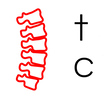



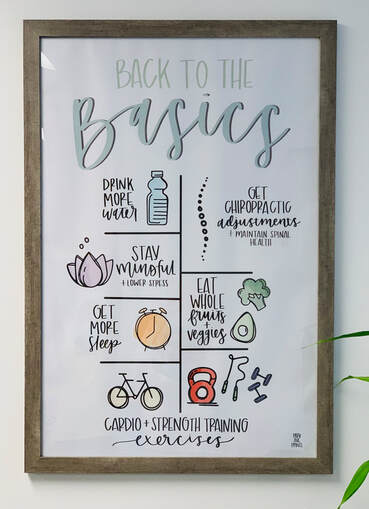
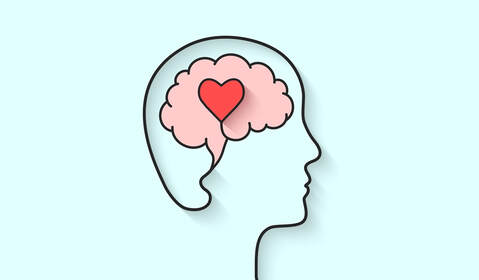


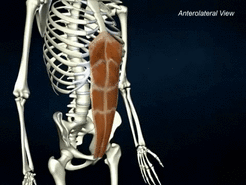
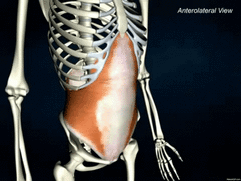
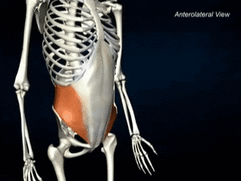
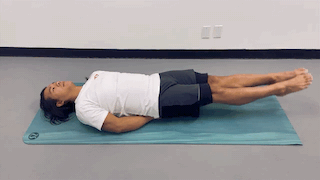
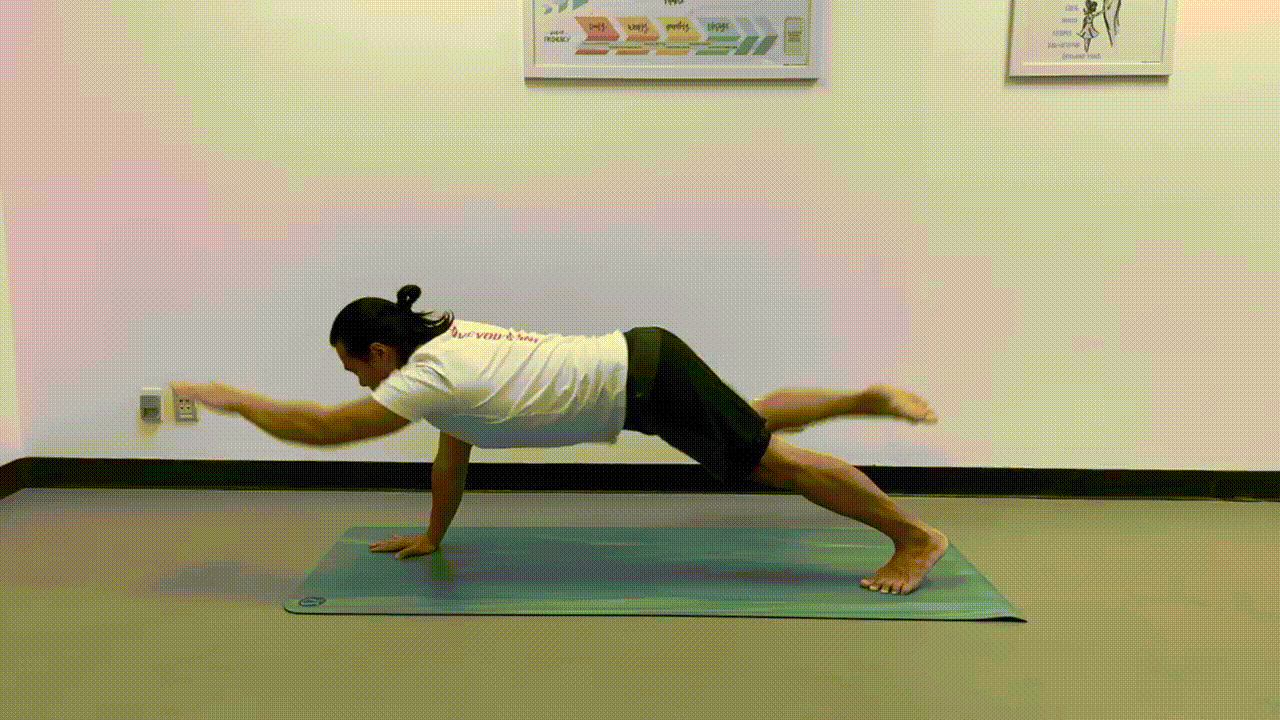
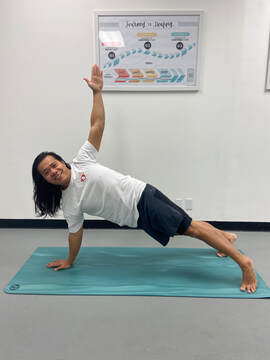
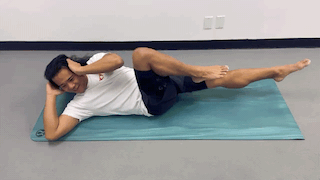

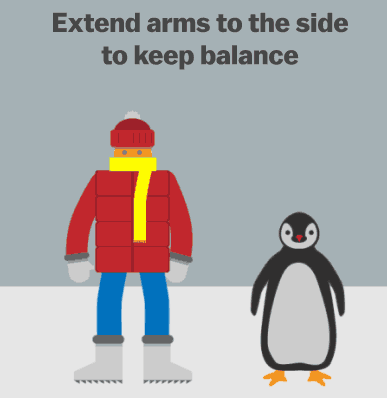
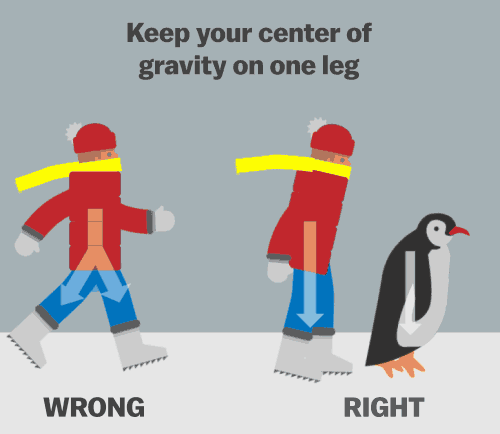
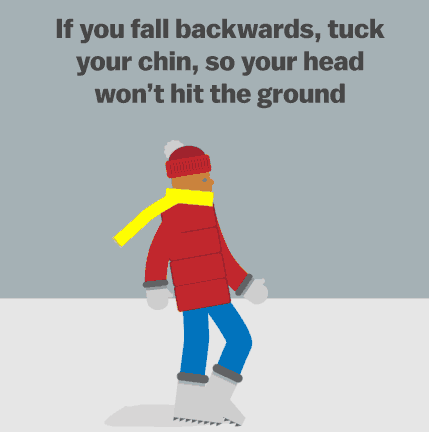

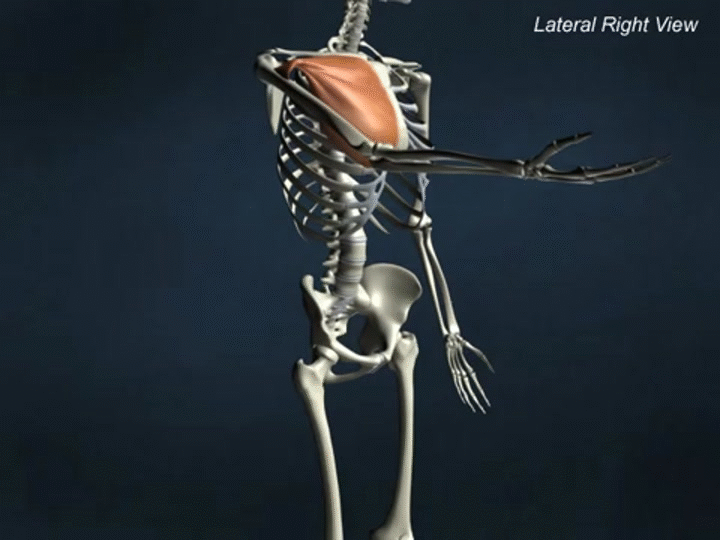
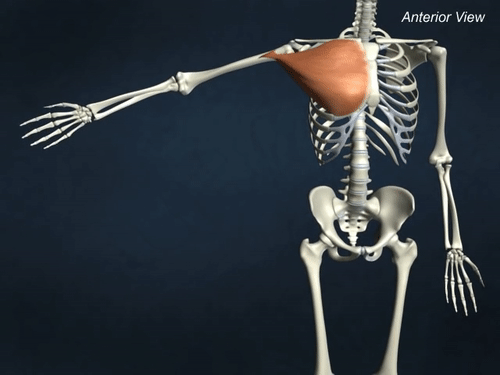
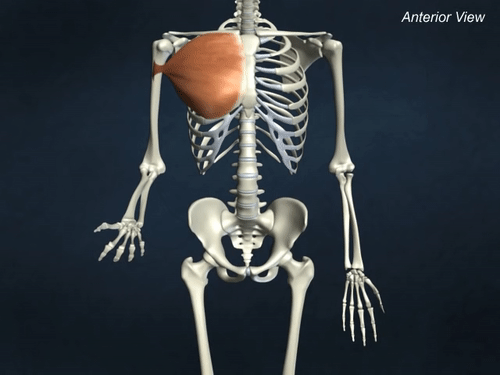
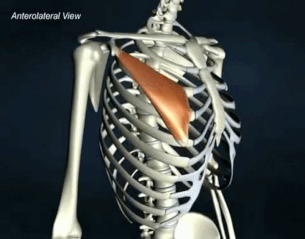
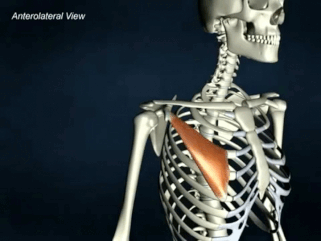
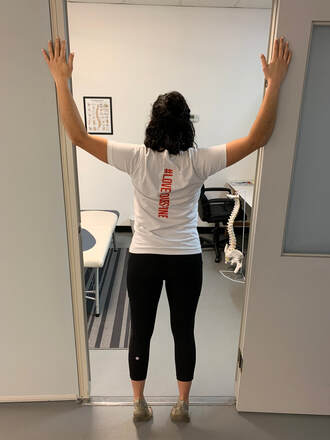
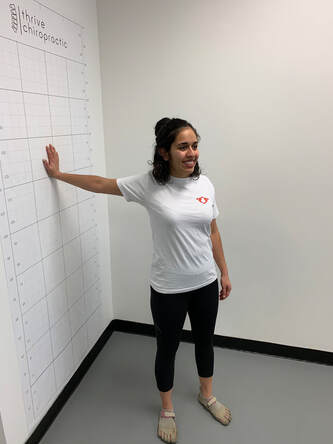
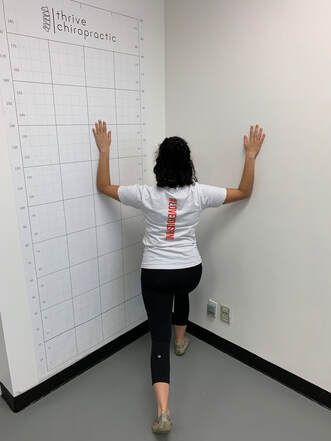
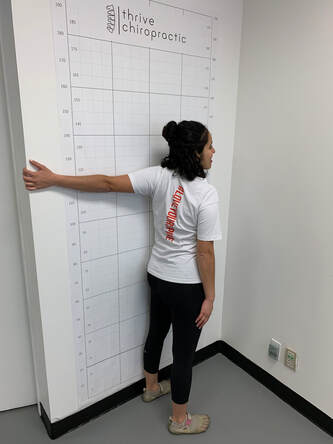
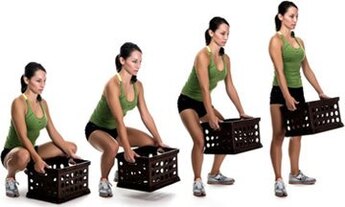
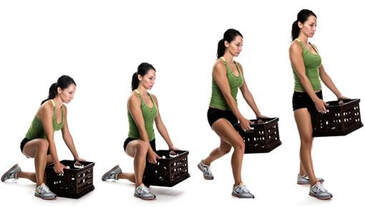
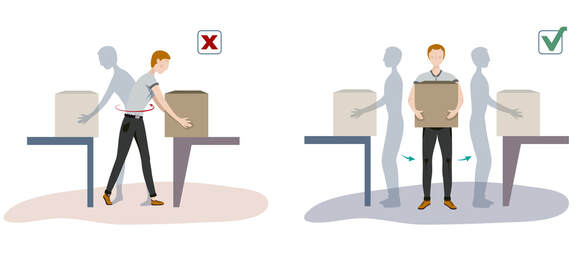

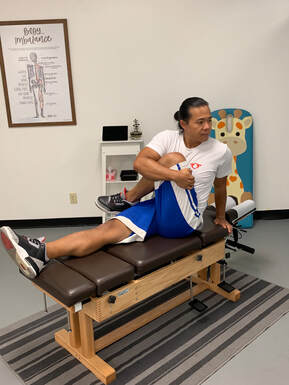
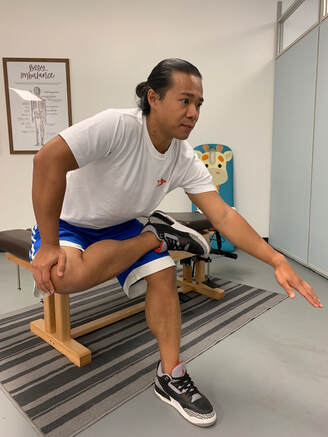
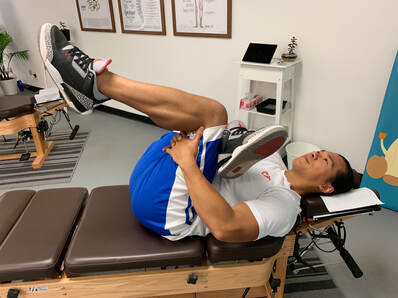
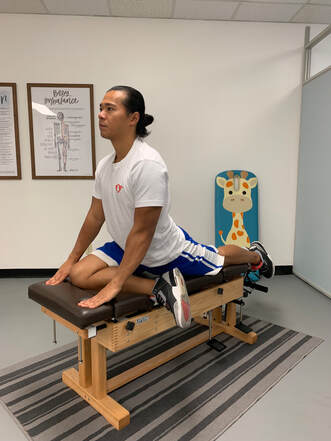
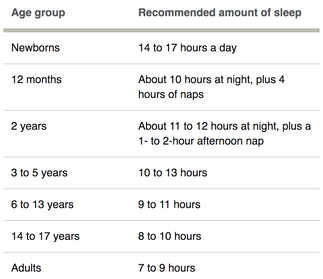
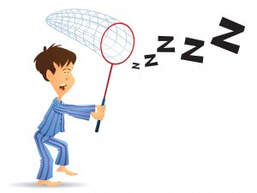
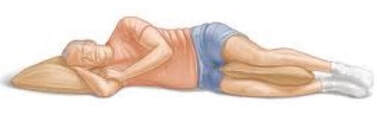
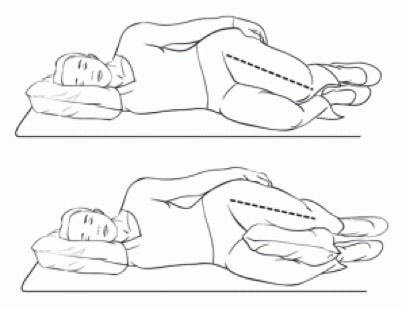
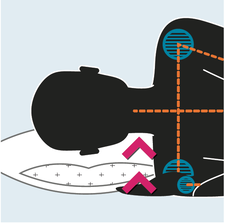
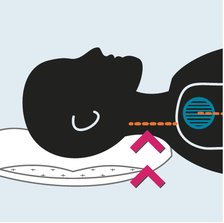

 RSS Feed
RSS Feed